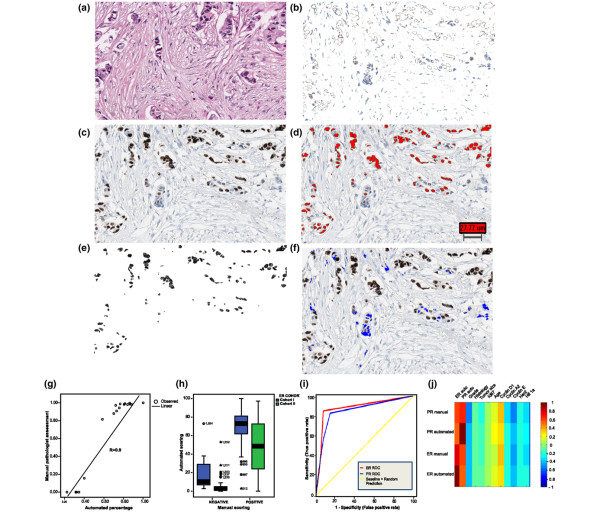Figure 1.
Overview of the automated image analysis process and correlation between automated and manual analysis. An example 500 × 500 pixel image taken to demonstrate the stepwise image process underlying the nuclear algorithm. (a) Original immunohistochemistry (IHC) section and (b) the equivalent H&E section. (c) Original IHC section after the extraction of 3,3'-diaminobenzidine (DAB)-positive tumour nuclei and (d) after the removal of DAB-negative tumour nuclei. (e) Identification (red) of DAB-positive tumour nuclei. (f) Identification (blue) of DAB-negative tumour nuclei. A more detailed description of the algorithm is available in Additional files 1 and 2. (g) Scatter plot demonstrating strong correlation between automated scores and manual annotation of the same cores by a pathologist. (h) Box plot (median, 25th and 75th quartiles) demonstrating the distribution of the oestrogen receptor (ER) quantitative automated data in relation to manual analysis in both cohorts. (i) Receiver-operator curves (ROCs) for the ER and the progesterone receptor (PR), with the number of false positives plotted along the abscissa and the number of true positives plotted along the ordinate (a curve more to the upper-left corner implies better performance). (j) Heat map showing the correlation between ER and PR expression determined by both automated and manual analysis and a number of clinicopathological parameters.

